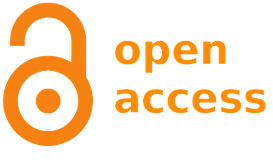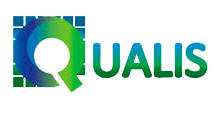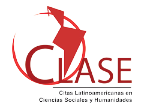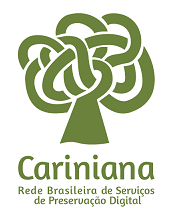Quality indicators for assessing the semantic potential of university knowledge portals
DOI:
https://doi.org/10.5433/1981-8920.2023v28n1p1Keywords:
University knowledge portal, Semantic portal, Semantic potential indicators, Retrieval informationAbstract
Objective: This study aimed to propose qualitative indicators for the evaluation of the semantic potential of university knowledge portals.
Methodology: The research included a bibliometric survey, systematic and content analysis and field research with the sending of a questionnaire to IT coordinators of the 69 Brazilian federal universities, in order to identify the technologies and human resources available on the portal of each institution. Data processing was carried out through descriptive statistical analysis and the indicators were validated by a panel of experts.
Results: The mapping of the network of semantic university portals showed human and non-human actors and their interrelationships marked by strong and weak ties. A set of 18 qualitative indicators built from semantic and sociotechnical precepts was proposed.
Conclusions: The set of indicators can be used as a management tool, in order to provide semantic research that facilitates access to relevant information, in addition to favoring interoperability and communication and collaboration actions, contributing to the evolution of university knowledge portals as a sociotechnical application.
Downloads
References
ANDRADE, Gabriela Rieveres Borges de; VAITSMAN, Jeni; FARIAS, Luis Otávio. Metodologia de elaboração do índice de responsividade do serviço (IRS). Cad. Saúde Pública, Rio de Janeiro, v. 26, n.3, p. 523-534, mar, 2010. Disponível em: https://doi.org/10.1590/S0102-311X2010000300010. Acesso em: 15 fev. 2021.
AROUA, Essayeh; MOURAD, Aabed. An ontology-based framework for enhancing personalized content and retrieval information. INTERNATIONAL CONFERENCE ON RESEARCH CHALLENGES IN INFORMATION SCIENCE, 2017. Proceedings...Brighton, 2017.Disponível em: https://doi.org/10.1109/RCIS.2017.7956547. Acesso em: 15 fev. 2020.
BARDIN, L. Análise de conteúdo. 3. ed. Lisboa: Edições 70, 2011.
BENABDERRAHMANE, Sidahmed et al. Smart4Job: a big data framework for intelligent job offers broadcasting using time series forecasting and semantic classification. Big data Research, Netherlands, v.7, p. 16-30, March, 2017. Disponível em: https://doi.org/10.1016/j.bdr.2016.11.001. Acesso em: 10 nov. 2020.
BERNERS-LEE, Tim; HENDLER, James; LASSILA, Ora. The semantic Web: a new form of Web content that is meaningful to computers will unleash a revolution of new possibilities. Scientific American, New York, v. 284 n. 5, May, 2001
BIZER, Christian; HEATH, Tom; BERNERS-LEE, Tim. Linked data-the story so far. International Journal on Semantic Web and Information Systems, Hershey, Pennsylvania, EUA v. 5, p.1-22, 2009. Disponível em: http://dx.doi.org/10.4018/jswis.2009081901. Acesso em: 17 out. 2021.
BÖRNER, Katy et al. VIVO: A semantic approach to scholarly networking and discovery. Synthesis Lectures on the Semantic Web: Theory and Technology, San Rafael, California, v. 7, n. 1, p. 1-178, 2012. Disponível em: https://doi.org/10.2200/S00428ED1V01Y201207WBE002. Acesso em: 20 jul. 2021.
BURNS, Tom R. The sociology of complex systems: an overview of actor-system-dynamics theory. World Futures: the Journal of New Paradigm Research, Milton, United Kingdom, v. 62, n. 6, 2006, p. 411-440. Disponível em: https://doi.org/10.1080/02604020600798619. Acesso em: 22 set. 2021.
CALLON, Michel. Society in the making: the study of technology as a tool for sociological analysis. In: Wiebe Eco Bijker et al. (ed.). The social construction of technological systems: new directions in the sociology and history of technology. Cambridge, Mass: Mit Press, 1986. p. 83-103. (a)
CALLON, Michel. The sociology of an actor-network: the case of the electric vehicle. In: CALLON, Michel; LAW, John; RIP, Arie (ed.). Mapping the dynamics of science and technology. Houndmills: Macmillan Press, 1986, p. 19-34. (b)
CRESPO BORGES, Thomás. Respuestas a 16 preguntas sobre el empleo de expertos encruz la investigación pedagogica. Lima: Editorial San Marcos, 2007.
DONABEDIAN, Avedis. The methods and findings of quality assessment and monitoring: an ilustraded analysis. Ann Arbor, Michigan: Health Administration Press, 1985.
DUARTE, Mariana Machado Garcez; HARA, Carmem S. Otimização do mapeamento de consultas SPARQL para SQL. In: ESCOLA REGIONAL DE BANCO DE DADOS, 24, 2018, Porto Alegre. Anais ..., Porto Alegre, SBC, 2018.
EL HAJI, Essaid; AZMANI, Abdellah.; El Harzli, Mohamed. Multi-expert system design for educational and career guidance: an approach based on a multi-agent system and ontology. International Journal of Computer Science Issues (IJCSI), Mauritius, v.1 1, n. 5, p. 46-52, Sep 2014.
GIL, Antonio Carlos. Como elaborar projetos de pesquisa. 5. ed. São Paulo: Atlas, 2010.
GRANOVETTER, Mark. The strength of weak ties: a network theory revisited. In: Sociological Theory. San Francisco: Ed. Randall Collins, 1983. v.1. p. 2001-2233.
GRUBER, Tom. What is an ontology? 1996. Disponível em: http://www-ksl.stanford.edu/kst/what-is-an-ontology.html. Acesso em: 01 maio. 2021.
GUARINO, Nicola. Understanding, building and using ontologies. International Journal of Human and Computer Studies, London, v. 45, n. 2/3, p. 2, 1997. Disponível em: http://ksi.cpsc.ucalgary.ca/KAW/KAW96/guarino/guarino.html. Acesso em: 10 Jan. 2020.
GUEDES, Josefina A. S.; STRAUHS, Faimara do Rocio. Portais do conhecimento de universidades: um quadro referencial para avaliação de potencial semântico. Liinc em Revista, Rio de Janeiro, v.12, n.1, p. 166-179, maio 2016. Disponível em: http://revista.ibict.br/liinc/article/view/3667/3114. Acesso em 17 nov. 2021.
GUO, Kehua et al. SOR: An optimized semantic ontology retrieval algorithm for heterogeneous multimedia big data, Journal Computational Science Education, Durham v. 28, p. 455-465, 2018. Disponível em: https://www.sciencedirect.com/science/article/pii/S187775031730176X?via%3Dihub. Acesso em: 17 nov. 2021.
HUGHES, Thomas. The Evolution of large technological systems. In: BIJKER, W., HUGHES, T. e PINCH, T. The social construction of technological systems. Cambridge: The MIT Press, 1989, p. 51-82.
IYAMU, Tiko; MGUDLWA, Sibulela. Transformation of healthcare big data through the lens of actor network theory. International Journal of Healthcare Management, London, v.11, n.3, p. 182-192, 2018.
KOIVUNEN, Marja-Riitta; MILLER, Eric. W3C: Semantic Web activity. In: SEMANTIC WEB KICK-OFF SEMINAR IN FINLAND, 2044. Proceedings … Finland: Helsinki Institute for Information Technology, Nov. 2001.
LAST, John M. A dictionary of epidemiology. 2nd ed. New York: Oxford University Press, 1998.
LATOUR, Bruno. Ciência em ação: como seguir cientistas e engenheiros sociedade afora. São Paulo: Editora UNESP, 2001.
LAUSEN, Holger et al. Semantic Web portals – state of the art survey. Journal of Knowledge Management, West Yorkhire, v. 9, n. 5, p. 40-49, 2005. Disponível em: ttps://www.emerald.com/insight/content/doi/10.1108/13673270510622447/full/html. Acesso em: 17 nov. 2021.
LAW, John. Notes on the theory of the actor network: ordering, strategy and heterogeneity. Lancaster, Lancaster University, 1992.
LAWAN, Abba; RAKIB, Abdur. The semantic Web rule language expressiveness extensions-a survey. Arkiv.org, Malásia, arXiv preprint arXiv:1903.11723, 2019.
LI, Huankang et al. An optimized approach for massive web page classification using entity similarity based on semantic network. Future Generation Computer Systems, Amsterdam, v. 76, p. 510–518, 2017. Disponível em: https://www.sciencedirect.com/science/article/pii/S0167739X17303321?via%3Dihub. Acesso em 17 nov. 2021.
MAATOUK, Yasser. Building AIPedia ontology to evaluate research impact in artificial intelligence area. Academia Letters, August, 2021. Disponível em: https://doi.org/10.20935/AL2781, 2021. Acesso em 20 set. 2021.
MAEDCHE, Alexander. et al. SEAL - a framework for developing semantic portals. In BRITISH NATIONAL CONFERENCE ON DATABASES, 18, Proceedings…Oxford, UK, LNCS Springer, July, 2001. Disponível em; https://dl.acm.org/doi/10.1145/500737.500762. Acesso em: 18 nov. 2021.
MALHOTRA, Meenakshi; NAIR, T. R. Gopalakrisnan. Evolution of knowledge representation and retrieval techniques. International Journal of Intelligent Systems and Applications, Hong Kong, v. 7, n. 7, p. 18-28, Jun 2015.
MALHOTRA, Naresh K. Pesquisa de marketing: uma orientação aplicada. 7. ed. Porto Alegre: Bookman, 2019.
MARCONI, Maria Andrade.; LAKATOS, Eva Maria. Técnicas de pesquisa. 7. ed. São Paulo: Atlas, 2010b.
MASNER, Jan et al. Creation, storage and presentation of information content – semantics, sharing, presentation, and archiving. Agris On-line Papers in Economics and Informatics, Czechia, v.11, n. 1, p. 75-82, March 2019. PRO NA REV
NGO, Vuong M.; CAO, Tru. H. Ontology-based query expansion with latently related named entities for semantic text search. ArXiv.org, Ithaca, N.Y, v.1, p. 1-12, 2018.
NGUYEN, Phuong T. et al. An automated approach to assess the similarity of GitHub repositories. Software Quality Journal, Andover, U.K., v. 28, n. 3, p. 1-37, 2020.
NIELSEN, J. Projetando Web sites. Rio de Janeiro, Editora Campus. 2000.
NIELSEN, Jacob.; LORANDER, Hoa. Usabilidade na Web: projetando websites com qualidade. Rio de Janeiro: Elsevier, 2007.
OPEN KNOWLEDGE INTERNACIONAL. Disponível em https://okfn.org/opendata/how-to-open-data/. Acesso em 23 jan. 2022.
REYNOLDS, Dave; SHABAJEE, Paul; CAYZER, Steve. Semantic Information Portals. New York, ACM, 2004. p.290-291. Disponível em: https://dl.acm.org/doi/abs/10.1145/1013367.1013440. Acesso em 08 maio. 2020.
SHIM, Yonwoon; SHIN, Dong-Hee. Analyzing china’s fintech industry from the perspective of actor-network theory”. Telecommunications Policy, London, v. 40, n. 2/3, p. 168-181, 2016.
SILVA, Renata; SANTOS, Plácida, FERNEDA, Edberto. Modelos de recuperação de informação e Web Semântica: a questão da relevância. Inf. Inf., Londrina, v. 18, n. 3, p. 27 – 44, set. / dez. 2013. Disponível em: https://www.uel.br/revistas/uel/index.php/informacao/article/view/12822. Acesso em: 29 out. 2021.
STANESCU, Nicolae G. A smart approach for e-learning domain: the use of business models and semantic technologies. Informática Econômica, Bucharest, v.22, n.2, p. 68-80, 2018. Disponível em:https://www.proquest.com/docview/2067316838/fulltext/A778C2CF1C154A46PQ/1?accountid=146694. Acesso em 29 out. 2021.
TRIOLA, M. F. Introdução à estatística. 12. ed. Rio de Janeiro: LTC, 2017.
WALSHAM, Geoff. Actor-network theory and IS research: current status and future prospects. In: LEE, A.; LIEBENAU, J.; DEGROSS, J. (eds) Information systems and qualitative research. Boston, MA: IFIP – The International Federation for Information Processing, 1997. DOI:10.1007/978-0-387-35309-8_23. Disponível em: https://www.semanticscholar.org/paper/Actor-network-theory-and-IS-research%3A-current-and-Walsham/1e963eb52b2d5f65003093944c77080a6e632ba8. Acesso em: 02 out. 2020.
WIMMER, Hayden; YOON, V.; RADA, Roy. Integrating Knowledge sources: an ontological approach. International Journal of Knowledge Management, Hershey, Pa, v. 9, n. 1, p. 60-75, 2013.
W3C. Standards. Disponível em: <http://www.w3.org/standards/>. Acesso em 13. mar. 2022.
Downloads
Published
How to Cite
Issue
Section
License
Copyright (c) 2023 Informação & Informação

This work is licensed under a Creative Commons Attribution 4.0 International License.
A revista se reserva o direito de efetuar, nos originais, alterações de ordem normativa, ortográfica e gramatical, com vistas a manter o padrão culto da língua e a credibilidade do veículo. Respeitará, no entanto, o estilo de escrever dos autores. Alterações, correções ou sugestões de ordem conceitual serão encaminhadas aos autores, quando necessário.
O conteúdo dos textos e a citação e uso de imagens submetidas são de inteira responsabilidade dos autores.
Em todas as citações posteriores, deverá ser consignada a fonte original de publicação, no caso a Informação & Informação.












